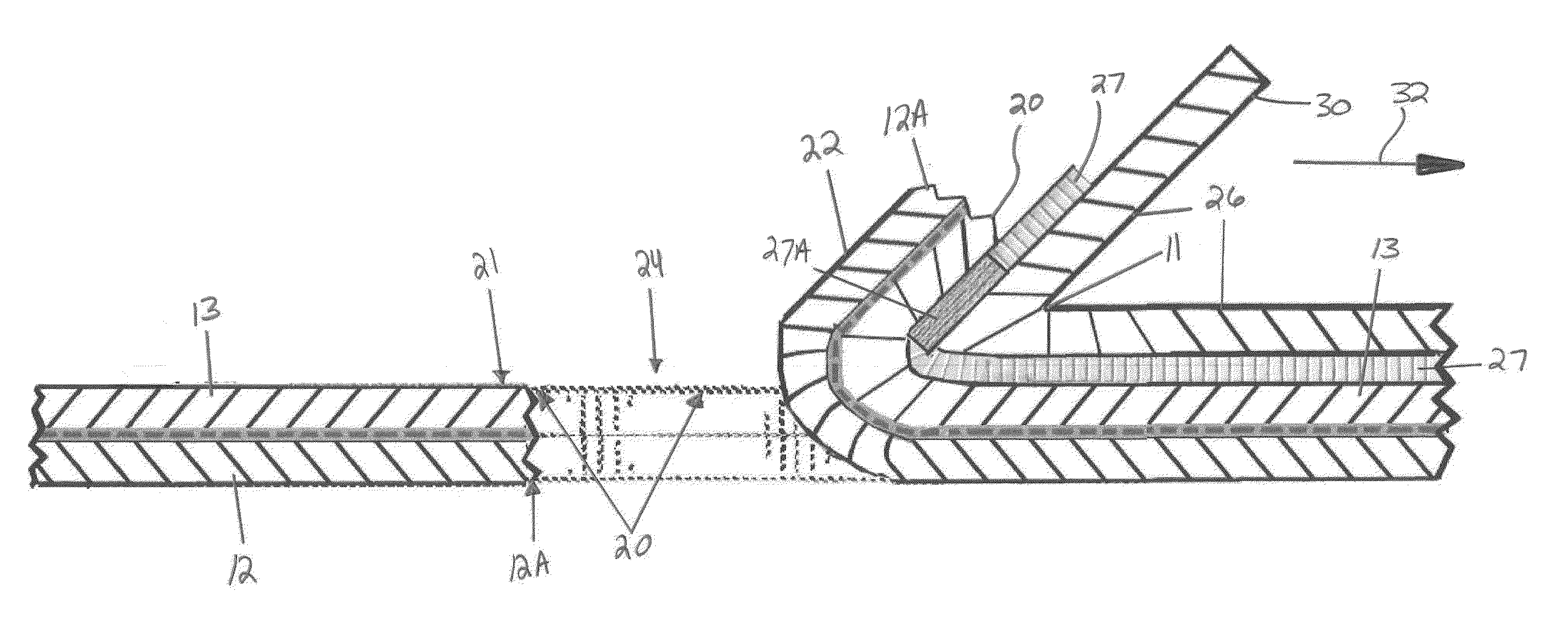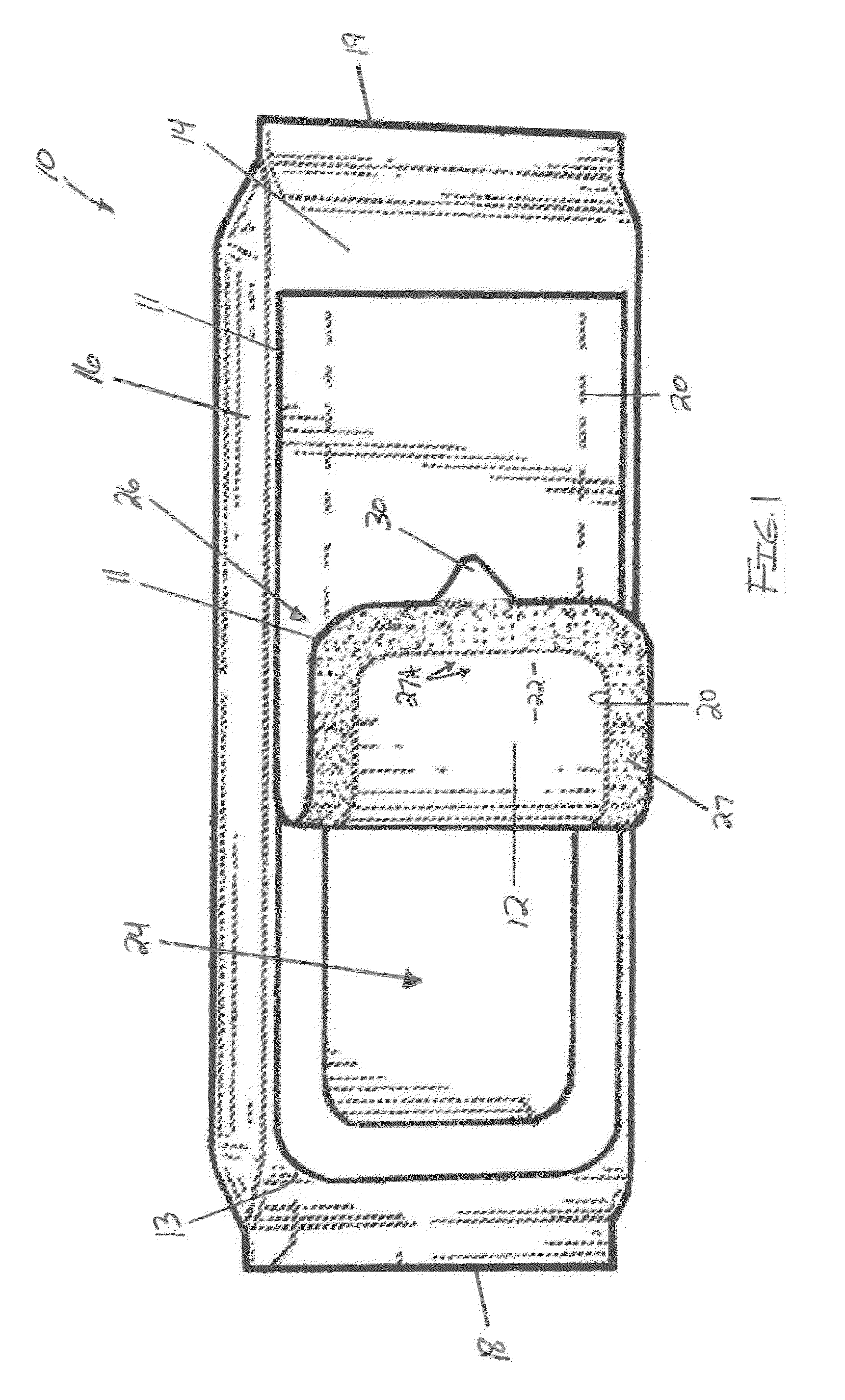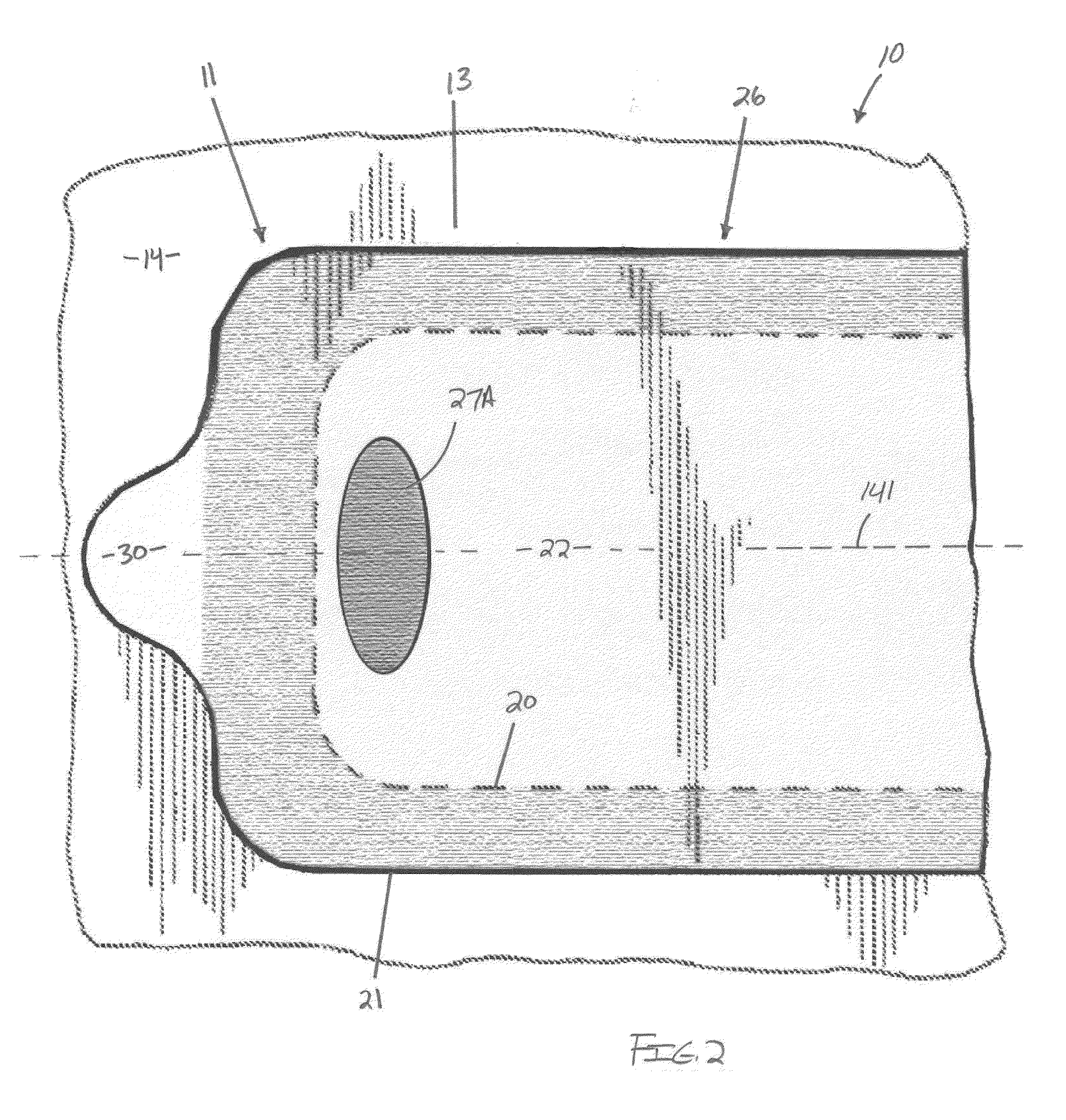Scored and labeled resealable packaging
a resealable packaging and label technology, applied in the field of resealable closures, can solve the problems of not always using boards, requiring more packaging materials than is necessary to package food, and not being able to meet the needs of food products in the packaging, so as to improve the function of the system, reduce peeling force, and improve the effect of the system
- Summary
- Abstract
- Description
- Claims
- Application Information
AI Technical Summary
Benefits of technology
Problems solved by technology
Method used
Image
Examples
Embodiment Construction
[0057]Referring now to the figures with more specificity, there is shown a first package 10 with pressure-sensitive label 11 functioning as a closure mechanism. Package 10 includes a two-ply wrapper comprising a first, inner film layer 12 and a second, scored outer film layer 13, forming a top or upper surface 14, sides 16 laterally opposite a center plane 141, a lower surface (not specifically illustrated), and longitudinally opposed crimped ends as at 18 and 19. The inner film layer 12 and outer film layer 13 are preferably formed from a polymeric film or other flexible material that has been cut, folded or otherwise pressed to define an inner space or receptacle for receiving the desired product, such as food items, to be provided within the package 10.
[0058]Package 10 can be used to store and distribute food items such as cookies, crackers, candy or other items. The outer film layer 13 may include graphics or other indicia to identify the contents of the package 10. The pressure...
PUM
| Property | Measurement | Unit |
|---|---|---|
| pressure | aaaaa | aaaaa |
| perimeter | aaaaa | aaaaa |
| pressure-sensitive | aaaaa | aaaaa |
Abstract
Description
Claims
Application Information
 Login to View More
Login to View More - R&D
- Intellectual Property
- Life Sciences
- Materials
- Tech Scout
- Unparalleled Data Quality
- Higher Quality Content
- 60% Fewer Hallucinations
Browse by: Latest US Patents, China's latest patents, Technical Efficacy Thesaurus, Application Domain, Technology Topic, Popular Technical Reports.
© 2025 PatSnap. All rights reserved.Legal|Privacy policy|Modern Slavery Act Transparency Statement|Sitemap|About US| Contact US: help@patsnap.com



